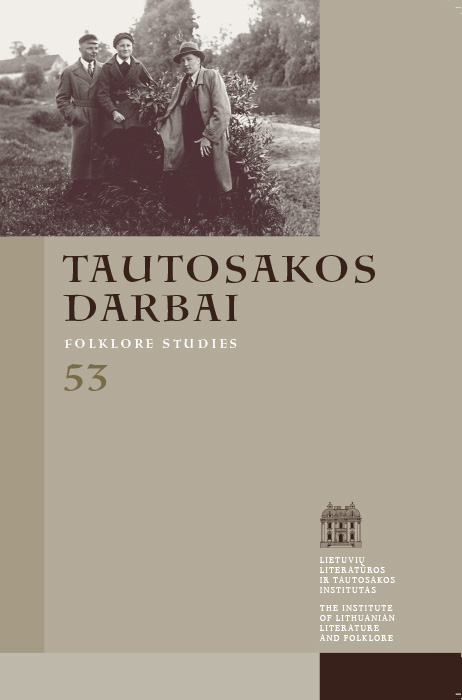Maža karalystė. Tarpukario Lietuvos kraštotyrinės atodangos (atvejo tyrimas)
Santrauka
Straipsnyje, remiantis atvejo analize, keliamas klausimas, kokie veiksniai daro įtaką fotografijos perskaitymui, sukurtam įspūdžiui, ir kaip skirtingos interpretacijos jį keičia. Tyrimo objektu pasirinktas vienas šeimos portretas iš Šiaulių kraštotyros draugijos 1938 m. kraštotyrinės ekspedicijos Gudaičių kaime, Padubysio valsčiuje bylos. Į fotografijos aptarimą įtraukiant istorinį kontekstą (nuo fotografo intencijų iki tapatybę formavusių socialinių bei kultūrinių aplinkybių), plečiamos tikėjimo vaizdu ribos, atskleidžiama vizualinio teksto pažinumo problema.
Atsisiuntimai
Nėra atsisiuntimų.
